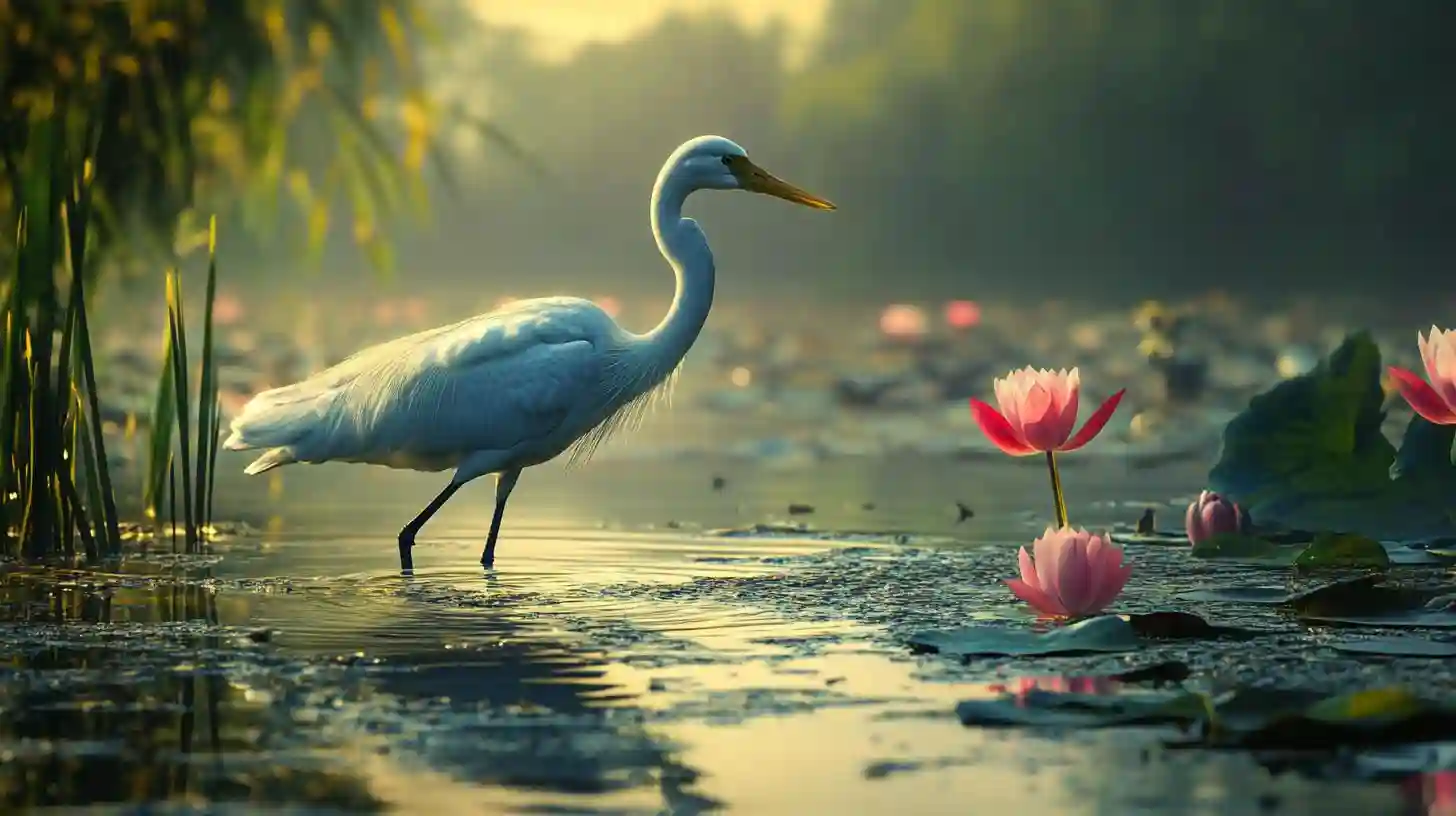
Knowledgetrovehq

Wetlands are vibrant ecosystems teeming with life, serving as crucial habitats for a wide variety of waterbirds. These areas, which include marshes, swamps, and bogs, are notable for their unique biodiversity and play an essential role in maintaining the health of the environment. As they filter pollutants, store carbon, and serve as buffers against flooding, wetlands are equally important for supporting avian species. A visit to these habitats often reveals a plethora of bird life, captivating observers with their varied colors, behaviors, and sounds.
Among the frequently spotted waterbirds in wetlands are the herons, a group that includes several notable species such as the great blue heron and the little egret. Great blue herons are easily recognizable due to their tall stature and striking plumage, marked by a blend of blue-gray feathers that provides excellent camouflage against the reeds and grasses where they often feed. These elegant birds are solitary hunters, using their long legs to wade through shallow waters in search of fish, amphibians, and crustaceans. Little egrets, on the other hand, are smaller and more socially inclined, often seen hunting in groups. Their pure white feathers and slender body make them an elusive yet beautiful sight as they gracefully stalk their prey.
Another commonly seen group of waterbirds are the ducks, which come in a rich variety of species. The mallard is perhaps the most familiar, recognizable by its distinctive emerald green head and the females' mottled brown appearance. Mallards are highly adaptable and can thrive in a variety of aquatic environments, making them a staple in virtually all wetland areas. Wood ducks, known for their intricate and vibrant plumage, also frequent wooded wetlands and are remarkable for their ability to nest in tree cavities. Their striking colors and unique features, including the males’ ornate patterns, make them a favorite among birdwatchers and photographers.
Not to be overlooked are the playful and lively shorebirds that frequent the margins of wetlands. Species like the sandpiper and the plover can often be seen probing the mud for small invertebrates, their quick movements highlighting their agility. Sandpipers, with their long legs and slender bodies, are adept at quickly shifting their weight from one foot to another, allowing them to pick at the ground for food. Killdeer, a type of plover, are known for their distinctive call and their characteristic broken-wing display, which serves to distract potential predators from their nests, cleverly safeguarding their young.
Another iconic waterbird is the American coot, a distinctive bird often mistaken for a duck. Coots are characterized by their dark bodies, white bill, and lobed feet that enable them to navigate through aquatic vegetation with ease. They are omnivorous, foraging for seeds, aquatic plants, and even small invertebrates within the wetland environment. Their strong social behaviors often lead to vibrant interactions as they communicate and establish hierarchies within their groups. Observing the coots' antics as they swim and dive can provide hours of entertainment for bird enthusiasts.
Wetland environments also host the magnificent and elegant swans, such as the mute swan and the trumpeter swan. These large birds move gracefully across the water's surface, their long necks held high, creating a striking silhouette against the backdrop of reeds and cattails. Mute swans are known for their distinctive orange bills and are often more aggressive in defending their territory. In contrast, trumpeter swans, identifiable by their all-white plumage and large size, are a symbol of pristine wilderness, often found in larger wetland areas where they can find ample feeding grounds.
The wetlands are also home to a variety of other fascinating waterbirds, including the common moorhen, often seen darting between vegetation, and the elegant black-necked stilt with its long legs and striking black-and-white plumage. Each species plays a vital role in its ecosystem, contributing to the balance and health of these remarkable environments, which are under constant threat from human encroachment, climate change, and pollution.
Exploring wetlands provides not only an opportunity to witness these remarkable waterbirds in their natural habitat but also a chance to appreciate the intricate web of life that these ecosystems support. The sights and sounds of waterbirds, from the call of the heron to the quacking of ducks, create a symphony of nature that invites us to connect with the environment. Observing these creatures allows us to reflect on the importance of wetlands and the pressing need to protect these vital habitats for future generations to enjoy. The experience of watching waterbirds in wetlands unveils the beauty of nature, celebrating the delicate dance of life that unfolds in these lush, dynamic landscapes.